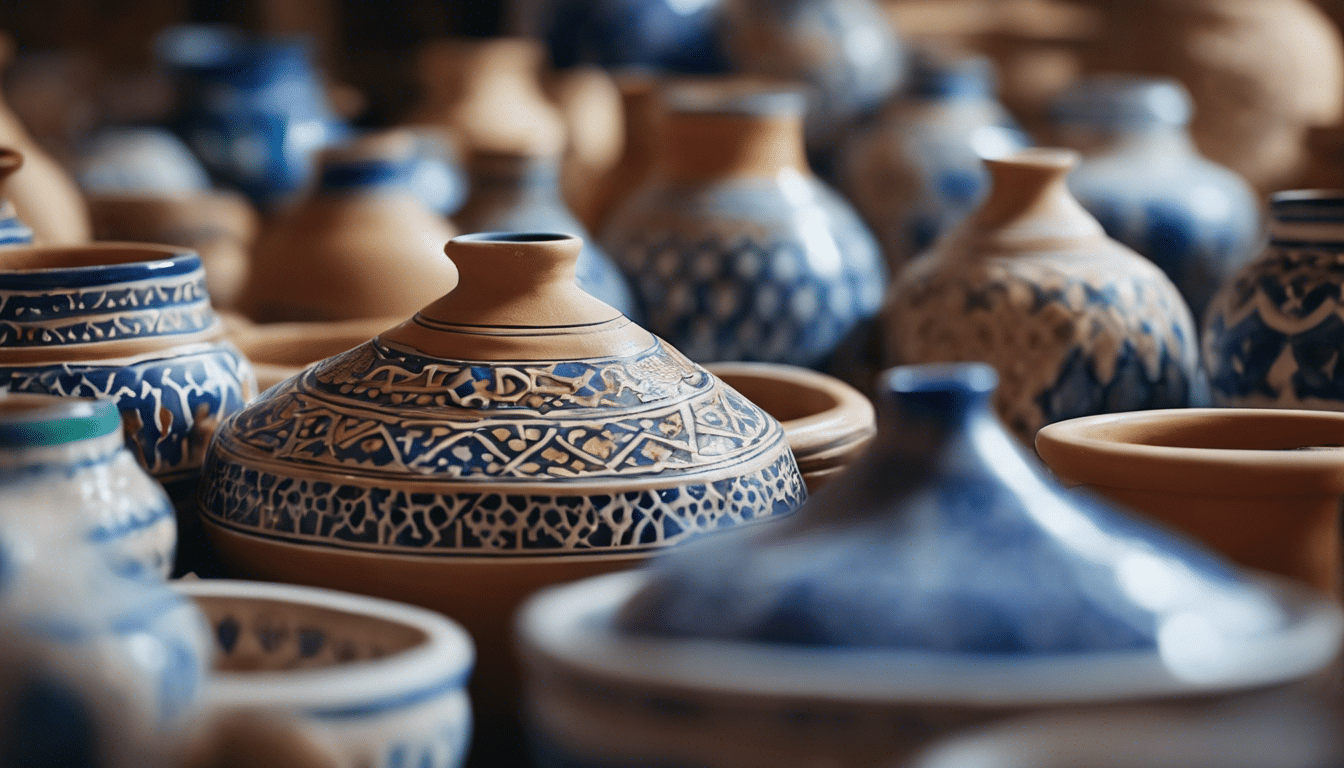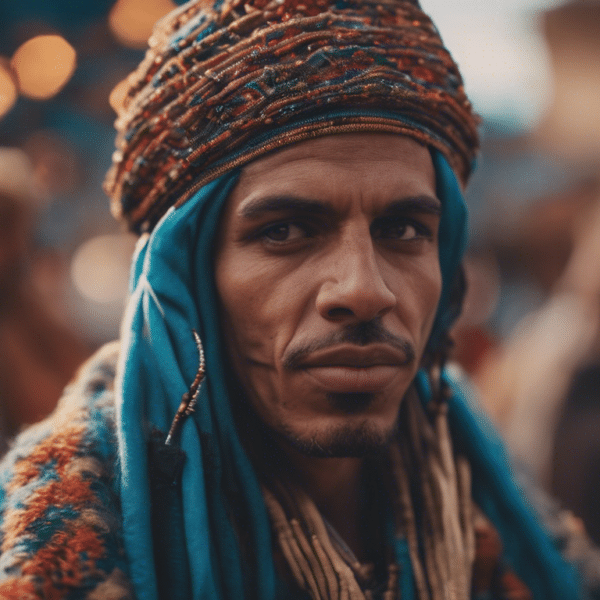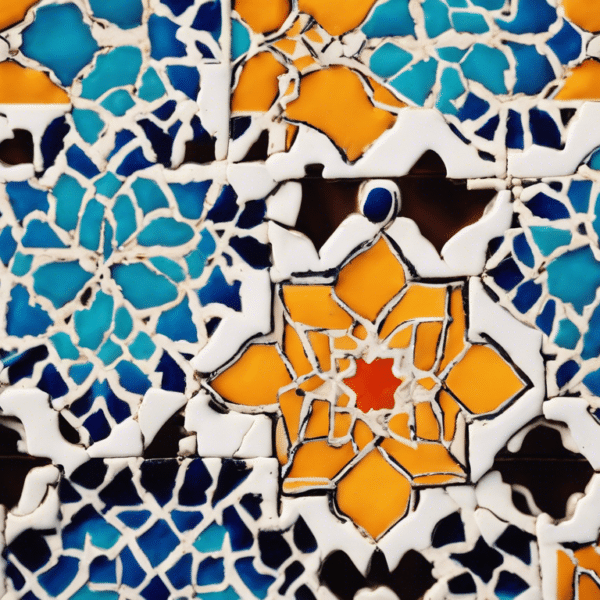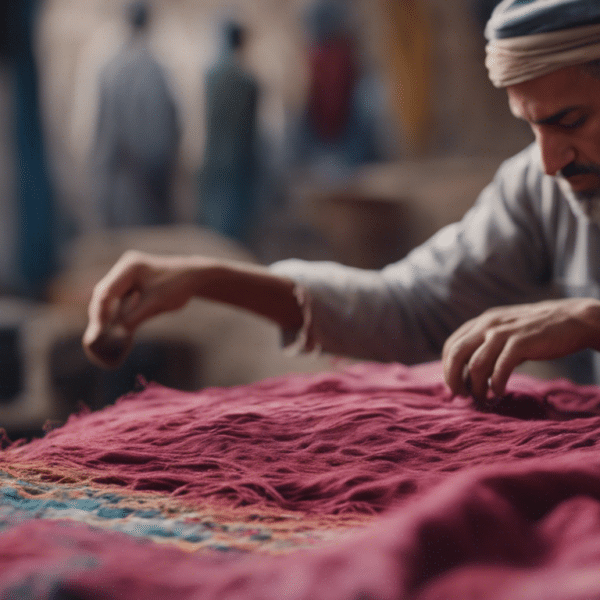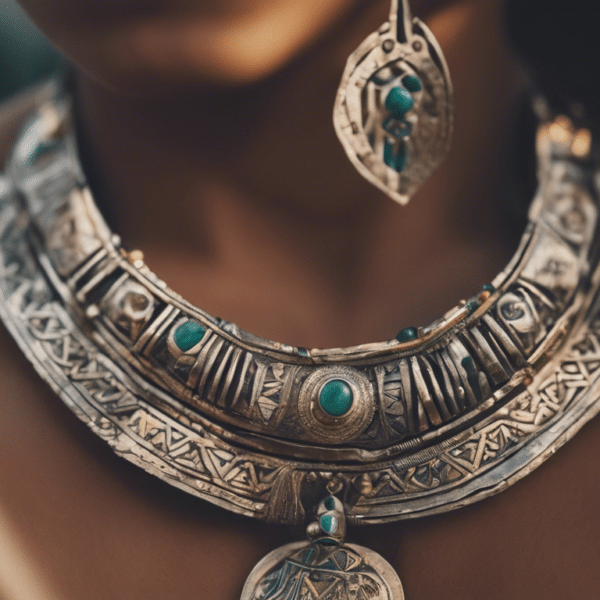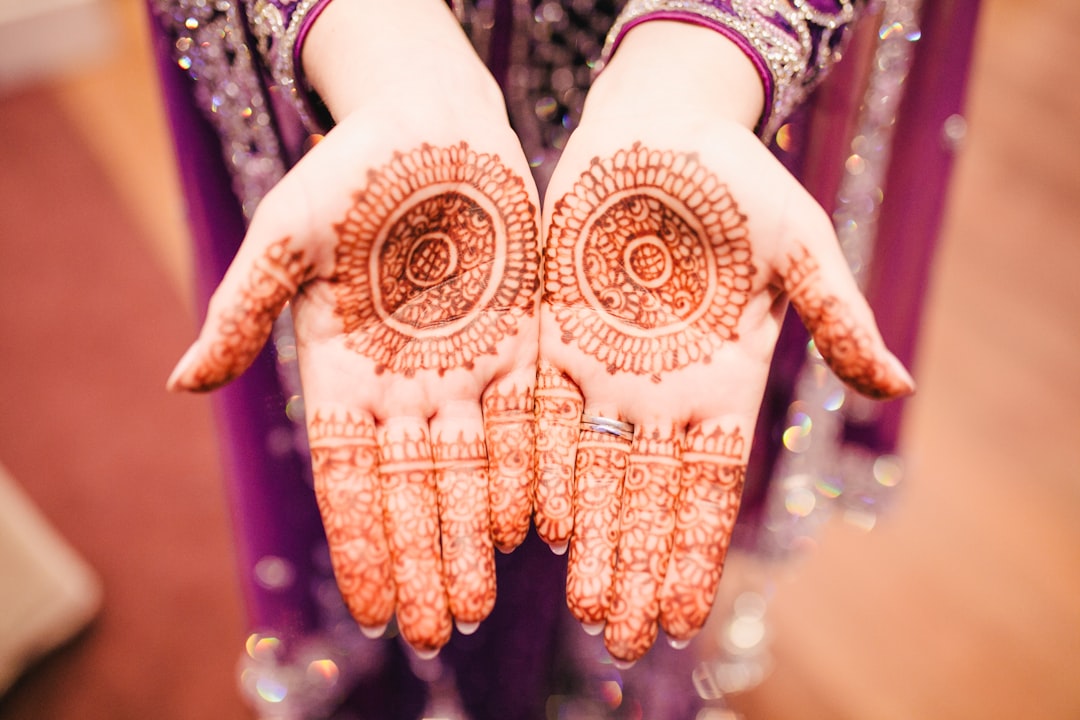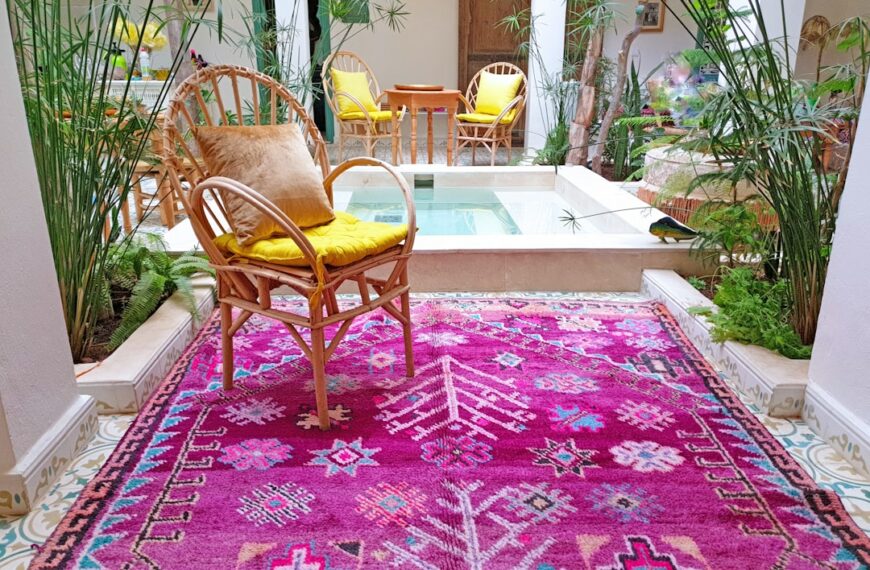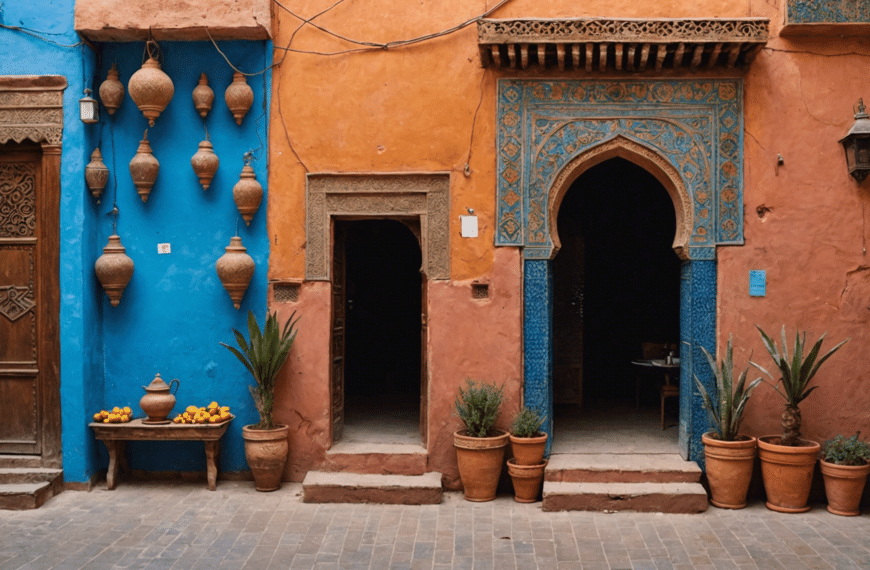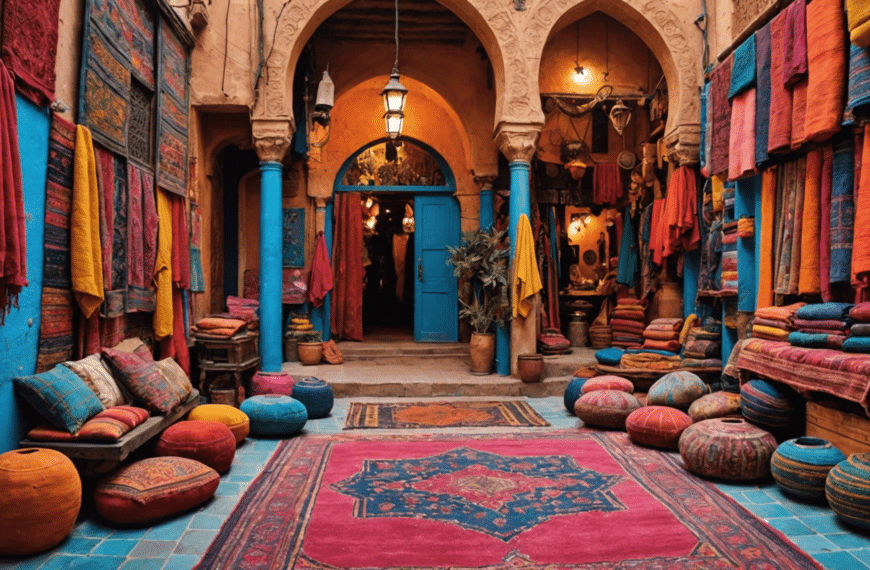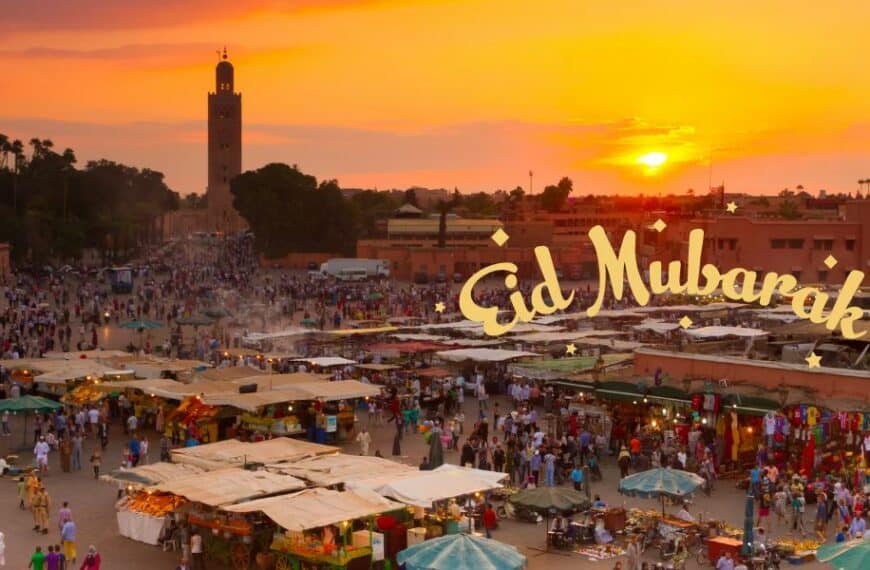Nestled within the vibrant labyrinth of Marrakech’s bustling medinas and echoing with the rhythmic taps of the artisan’s chisel, there lies a world where the rich Moroccan culture breathes through the very clay it molds. In this realm of earthen treasures, Moroccan ceramics and pottery rise as a testament to centuries-old traditions, embodying the spirit and artistry of a nation. Each curve of clay tells a story of dynasties past, and every intricate pattern paints a narrative of the hands that lovingly crafted it. As a traveler who has surrendered her heart to the enchanting alleys of Marrakech, I invite you to delve into the splendor of Moroccan ceramics and uncover what truly makes them a standout art form—a reflection of a country’s soul captured in the permanence of fired earth. Join me in exploring the distinctive features, the dexterity of the local maestros, and the historical significance that elevates Moroccan pottery from simple objects to masterpieces of cultural identity.
The Historical Legacy of Moroccan Ceramics
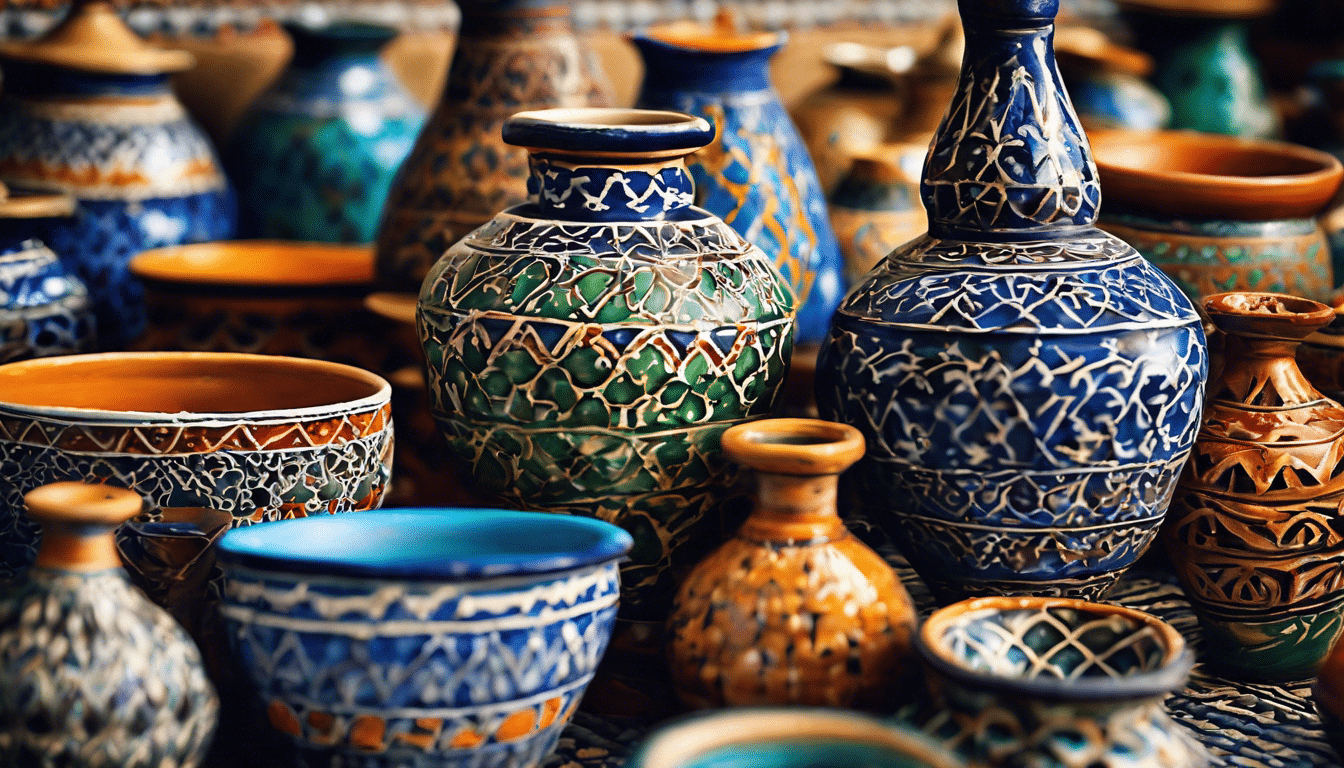
Moroccan Ceramics: A Voyage Through Time
As one delves into the vast mosaic of Moroccan culture, the gleaming jewel in its crown is undoubtedly the exquisite realm of Moroccan ceramics. These pieces are not merely utensils but a silent testament to the waves of influence and artistry that have washed over Morocco through the ages.
The Roots of Moroccan Ceramic Mastery
The story of Moroccan ceramics is one steeped in historical richness and diversity. The art form itself harkens back to ancient times when indigenous Berber populations first began the craft. But it was the arrival of the Moors and the influx of Andalusian culture that saw the ceramics industry flourish like the gardens of an oasis.
Craftspeople in cities like Fes and Meknes seized upon Islamic art motifs and geometric symmetry, creating designs that captured both the imagination and the spirit of Morocco’s vast heritage. They combined this with the vibrant colors and flowing forms that characterize the nation’s aesthetic—sapphire blues, rich greens, and the fiery oranges reminiscent of a Saharan sunset.
The Technique Behind the Tiles
The art of creating Moroccan ceramics isn’t merely a matter of form but also a rigid adherence to tradition. The process, largely unchanged over centuries, begins with the meticulous selection and preparation of clay, followed by the careful hand-etching of patterns, a hallmark of Moroccan craftsmanship.
Zellij tiles, a staple in Moroccan architecture, exemplify this tradition. Artisans painstakingly cut the glazed tiles into precise geometric shapes and assemble them into kaleidoscopic patterns to adorn everything from walls to tabletops. This intricate technique showcases not just the dexterity but also the mathematical acumen of the ceramicists, revealing a deep connection between art, architecture, and arithmetics in Moroccan culture.
The Living Legacy in Contemporary Moroccan Ceramics
Today, the legacy of Moroccan ceramics is as vibrant as the markets of Marrakech where they’re sold. Modern artisans uphold the ancient methods, ensuring each piece remains an echo of its past — a practice of preservation and respect for the art.
However, one can now observe a gentle evolution within this time-honored craftsmanship. Contemporary ceramic artists experiment with form and function while still honoring the motifs and processes of their forebears. This innovative spirit ensures the survival and relevance of Moroccan ceramics in a time when global crafts stand at the crossroads of tradition and modernity.
Embracing and Preserving Moroccan Ceramics
For those enchanted by the historical legacy of Moroccan ceramics, it becomes more than just an appreciation of art; it’s a foray into the vibrant pulse of Morocco itself. The ceramics are a tangible linkage to the past, a narrative etched in clay and glaze. Preserving these artisanal pieces is vital, not only as vessels of utility but as bearers of stories, of culture, and of the soul-stirring beauty that is Morocco.
To support this craft is to help secern the intricate threads that weave the tapestry of Moroccan life. From supporting local artisans to participating in workshops, enthusiasts can contribute to the thriving of this ancient yet ever-adapting art form.
In sum, the historical legacy of Moroccan ceramics is an epic tale wrought from earth and water, told with fire, and preserved for generations to come. It stands as a befitting tribute to the skill, ingenuity, and passion that have shaped it, inviting us all to cherish and perpetuate its timeless journey.
Distinctive Techniques in Moroccan Pottery Making
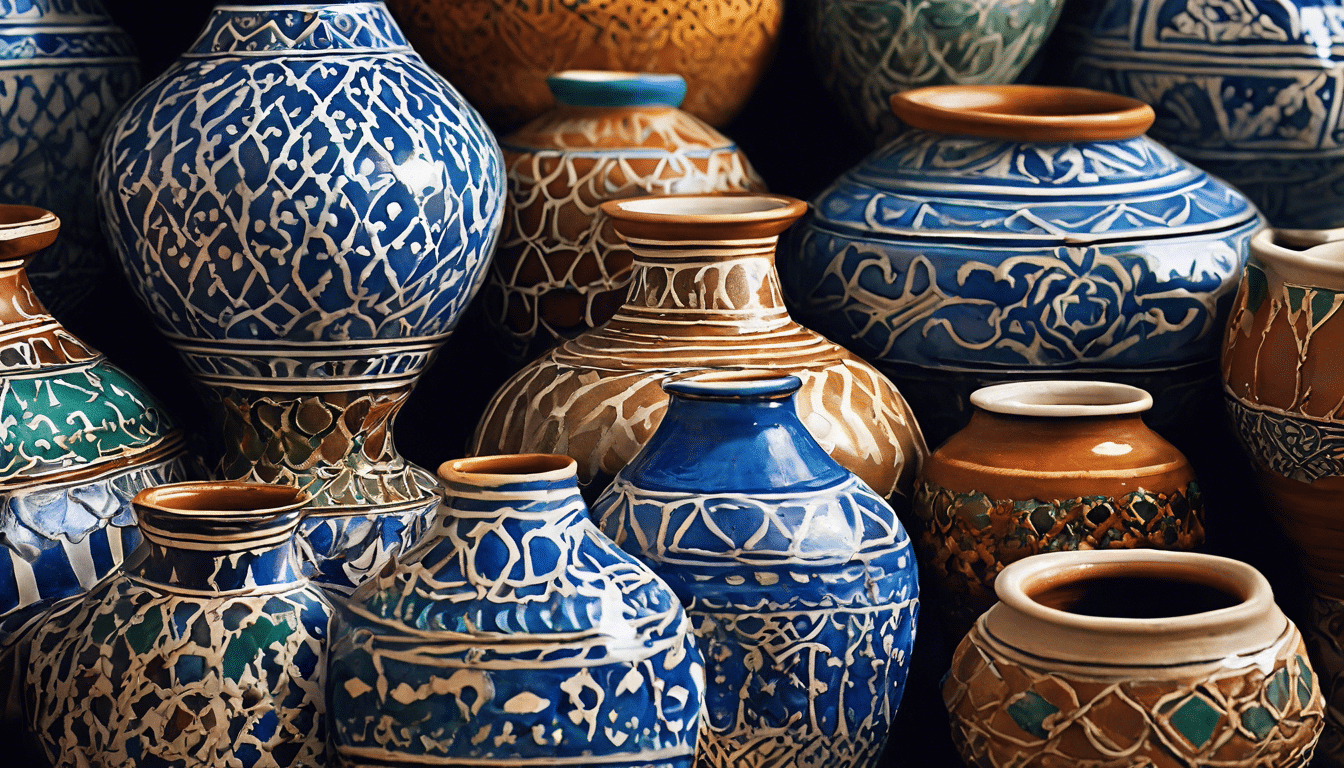
The Legacy of Moroccan Ceramics
In the heart of Morocco, a land where the echoes of ancient dynasties reverberate through the bustling souks and tranquil riads, the art of pottery making stands as a testament to a cultural heritage that spans the ages. The touch of the potter’s hands breathes life into every ceramic piece, infusing it with a story as unique and intricate as the winding streets of the Medinas.
Clay: the Foundation of Moroccan Pottery
The birth of Moroccan ceramics lies in the natural wealth of the country – the clay. Extracted from the fertile lands, each type of clay imparts a distinct character to Moroccan pottery. The process begins with the purification of this earth, a careful separation of grain and stone, thus ensuring the malleability necessary for the potter’s wheel. Her e the craft commences, as skilled hands shape the future vessels with an almost rhythmic precision.
Forming Techniques: A Dance of Hands and Wheels
The forming techniques used in Moroccan pottery are both diverse and complex, often requiring years of apprenticeship to master. Throwing is a method reserved for the most skilled potters, a magical interplay between human touch and the spinning wheel where symmetry and form emerge from lumps of moist clay. Hand-building, too, is a favored technique, which includes pinching, coiling, and slab construction – methodologies that allow for more intricate designs and structures not possible on the wheel.
Glazing and Firing: The Colorful Alchemy
After the shaping, glazing becomes the transformative stage, where pots, once drab in hue, voyage through the alchemy of fire and emerge resplendent in coat of liquid glass. Moroccan potters utilize lead-based glazes for their vibrant tones, though more are now turning towards eco-friendly alternatives. The firing process is crucial in this metamorphosis, each kiln firing inscribing upon the pottery the indelible fingerprints of time and temperature.
Decorative Brilliance: Patterns and Symbols
Beyond the shape and color lies the distinctive soul of Moroccan ceramics: the decoration. Here, artisans wield brushes as their forebears did; a lexicon of geometric patterns, arabesques, and calligraphy flows from their seasoned hands. This detailed artistry is often influenced by Islamic art, which eschews the depiction of living forms for the infinite complexity of mathematical motifs, inscribing within the clay a narrative of beauty and belief.
The Regional Variation: From Fes to Safi
Each region in Morocco contributes its unique essence to the craft. Famed for its blue and white pottery, Fes bears witness to Andalusian influences, with each pot a whisper of the Alhambra’s grandeur. In contrast, Safi, the heart of Moroccan ceramics, pulses with a passion for color – its artisans famed for their spontaneous decorations, where every brushstroke is a gamble of artistic intention.
Visiting The Pottery Souks: A Sensory Experience
For travelers like Elena, the pottery souks of Morocco are not merely markets; they are galleries, alive with the aroma of earth and the dazzle of colors – each piece inviting you to touch, to hold, to make part of your story. It’s no wonder why so many visitors leave with a piece of Moroccan pottery, a tangible memory not only of their journey but of an artistic heritage carried through centuries.
The Art of Collecting: Not Just a Purchase, but a Participation
For connoisseurs and enthusiasts, acquiring Moroccan ceramics goes beyond simple transaction. It’s a participation in the lifeblood of Moroccan art, an avenue to sustain and celebrate the work of artisans who maintain these ancient traditions. Collecting such works is to own a fragment of history, a piece of a narrative woven through the generations, a narrative of not just Morocco, but of humanity’s ceaseless dialogue with beauty.
Iconic Moroccan Ceramic Design and Patterns
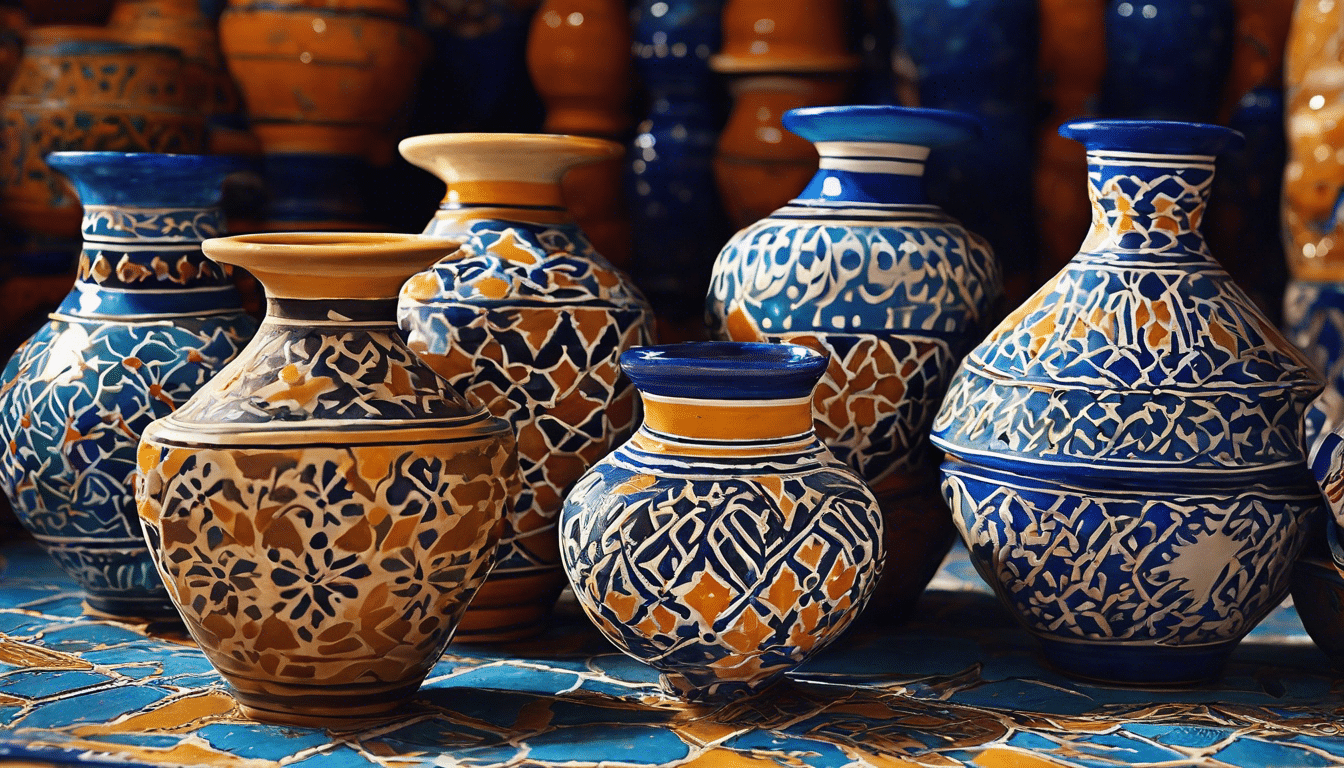
The Enchantment of Moroccan Ceramics
As one wanders the labyrinthine streets of the old medina, the senses are bewitched by the kaleidoscopical charm of Moroccan ceramics. Artisans in their workshops, like alchemists of the earth, transform humble clays into vivid treasure troves of design and color. From the bustling souks of Marrakech to the rhythmic hum of Fes’s ancient potteries, these ceramic artworks are not merely objects; they are stories molded by centuries of tradition and the deft hands of their creators.
The Quintessence of Moroccan Design
A myriad of designs manifests in the ceramics found across Morocco, each piece a testament to the intricate aesthetics of the country. The Islamic influence, intertwined with African and Andalusian artistry, speaks through every curve and dot nestled in these ceramic masterpieces. Geometric motifs converge in harmonious symmetries, floral patterns blossom into eternal springs, and the fabled Zellige tilework mosaics unfurl stories of palatial grandeur within their interlocking shapes.
Patterns That Weave History
Within the glazed surfaces of Moroccan pottery, one can trace the arcs of history and the rich tapestry of Moroccan culture. Traditional patterns such as the eight-point star or the hand of Fatima span generations, sourcing their origins from Islamic art and symbolism. Others encapsulate narratives of daily life, nature, and the omnipresent interplay between beauty and utility. Berber influences are rich with primitive vigor, reflecting a heritage that reverberates through time.
The Palette of Marrakech
The color palette employed in the ceramics of Morocco is as expansive as the landscapes from where they hail. The reds and browns mirror the terracotta and desert hues of Marrakech, the blues evoke the coastal serenity of Essaouira, and the greens represent the verdant valleys of the Atlas Mountains. Each color is extracted from nature and then mixed, sieved, and swirled into a potion of hues that breathes life into the earthenware.
Crafted with Passion and Precision
The creation of Moroccan ceramics is a ballet of precision and passion. The wheel turns in a rhythmic cadence as the potter shapes the molten earth. It is here where the narrative begins, under the watchful gaze of tradition and the innovative touch of modernity. The firing of the kiln unfurls the final chapter, as the high heat solidifies forms and ushers in the alchemy of glazing, where raw pigments transform into an iridescent sheen.
Every line is deliberate, every color chosen with intent. The process, slow and meditative, produces works of functional art that command admiration and respect.
Collecting the Craft
Collectors and lovers of ceramics find great joy in acquiring Moroccan ceramics for their homes. These pieces are more than decor; they are vignettes of a greater narrative, one that continues to evolve with each kiln’s sigh and painter’s brushstroke. In kitchens, courtyards, and living spaces, Moroccan ceramics breathe their stories into the daily life, inviting those who cross their path to pause and appreciate the artistry that has transcended time and trend.
From teapots to tagines, vases to intricate tiles, the legacy of Moroccan ceramics is a story scribed in clay and fired in imagination. The iconic patterns and designs of Moroccan ceramics are emblematic of a nation’s creative pulse, a rhythmic heartbeat that echoes through the markets, workshops, and homes. They are the soul of Morocco, given form in earthenware, and beguiling the world through their timeless beauty and deep-rooted heritage.

